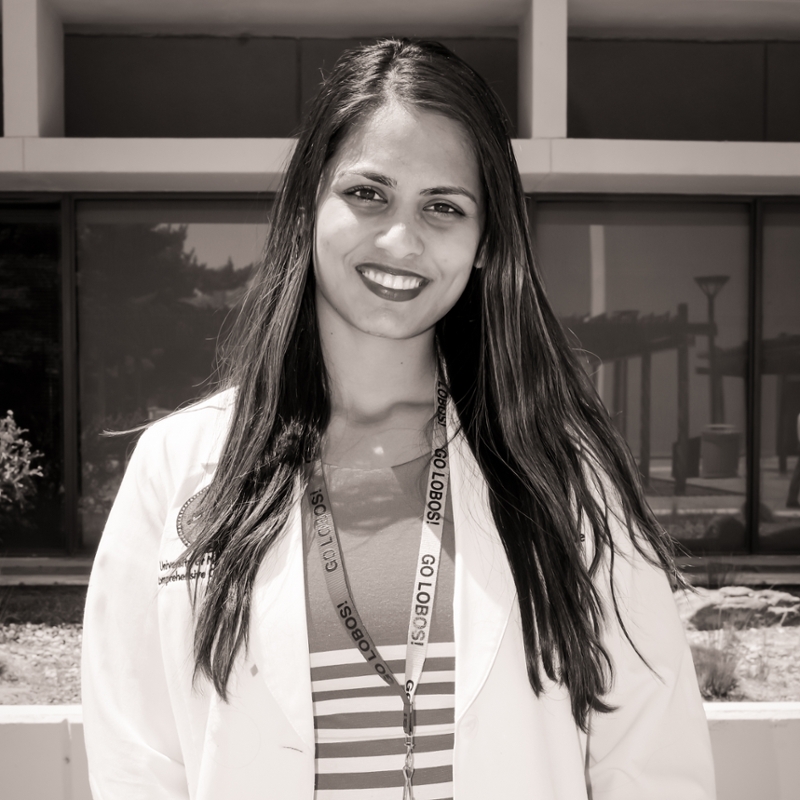Student Spotlights 2018
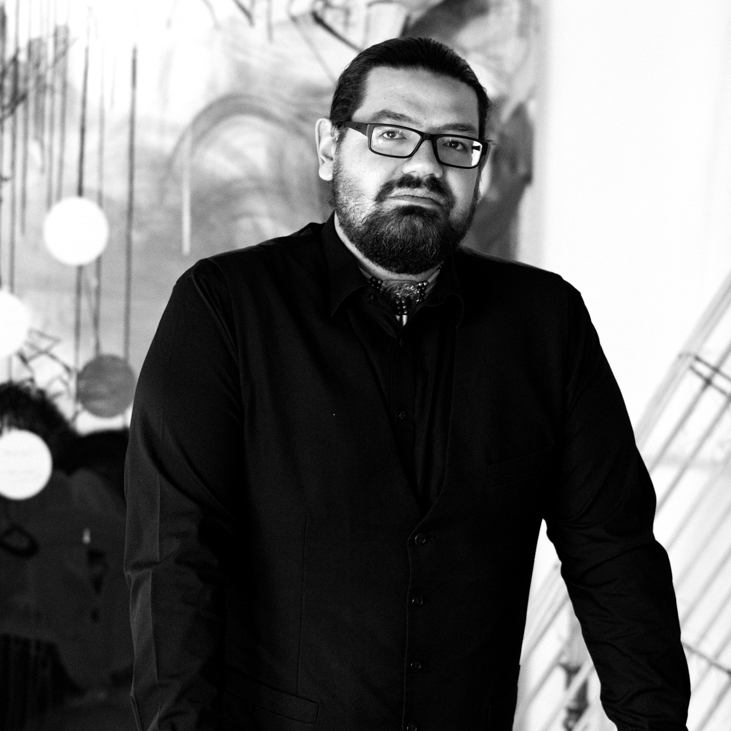
Jordan O. James is a Ph.D. student in the Department of Organization, Information and Learning Sciences (OILS) with a concentration in Learning Sciences. He chose to attend UNM for his graduate work specifically because of the interdisciplinary nature of the OILS program, which allows him to explore many topics of interest such as adult learning, program evaluation, and distance learning. He is currently working on his dissertation focused on two topics: 1) developing an early professional identity, and 2) improving the way design thinking is implemented in first-year urban planning courses. Developing an early sense of professional identity is essential because it allows undergraduates from any background to connect the work they do in the classroom to the interesting real-world work that professionally awaits them after graduation. Design thinking will also help undergraduates later in their professional careers by supporting their understanding that anytime they try to design something new, whether it be a community park or a transportation system, there is going to be failure. Students who learn to view design as an iterative process can conceptualize initial failures as a necessary part of the design of these systems.
This research could potentially be used in any academic field. Since the goal of an academic program is to produce students who can successfully navigate their respective fields, developing a professional identity and design thinking early in first-year undergraduate courses are pedagogical tools and frameworks that could potentially strengthen any program. While working professionally as a public health emergency management planner with the New Mexico Department of Health, Jordan came to realize a disconnect between the adult education being used in college and the adult education being used in the professional realm. He decided that he could help connect academic and professional education by enacting change at the source, i.e., first-year undergraduate courses where professional identity and design thinking ultimately begins.
Jordan grew up in the heart of Minnesota’s Superior National Forest on the Grand Portage reservation and among its surrounding communities. After attending boarding school at Navajo Preparatory High School, he enrolled at UNM where he completed both his bachelor's and master's degrees. At present, he teaches undergraduate courses at UNM’s School of Architecture and Planning while also working full time as a graduate research assistant in addition to his own full-time Ph.D. coursework. Upon completing graduate school, he would like to pursue a tenure-track faculty position in Urban, Community + Regional planning where he can implement pedagogical theories, conduct research on their application, and publish the results.
Grateful for the teachings and stories passed down from his ancestors, Jordan continues to honor his cultural heritage as an enrolled member of the Grand Portage Band of the Minnesota Chippewa Tribe by instilling the philosophical traditions of knowledge and sense-making to both his students and children through lifelong learning pedagogies. Among his people, the Anishinaabe (also known as the Chippewa or the Ojibwa), is the cultural belief that the Great Spirit put everything into being, which includes the known and unknown interactions and affordances of the world around us. As a Native American academic, he makes sense of the world by understanding that he is not ‘ascertaining’ any new knowledge in his academic pursuits, but rather only making sense of what was already put into place by the creator. Outside of academics, Jordan started the Indigenous Training Collaborative in 2016 which offers contemporary cultural competency training supporting lifelong adult learners to work more effectively with indigenous communities. In his free time, Jordan devotes himself to playing the drums in an all Native American alt. rock band, 'Boarding School Dropouts', spending time with his wife and three daughters, and taking on the challenges of building their various Pinterest projects.
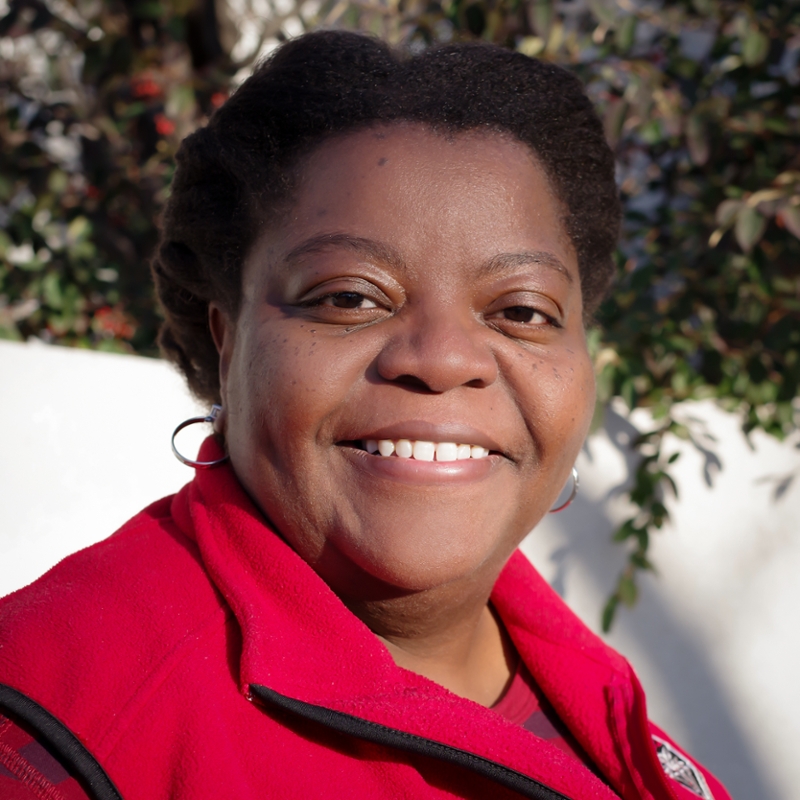
Carlyn N. Pinkins, (MA 2011, Georgia Southern University) is a PhD student in history with a current interest in African American History in the Southwest and 20th Century American Indian history. As she approaches her comprehensive exam, Carlyn is examining ways to contribute to the scholarship on Blackdom, the first African-American town in New Mexico. Blackdom’s founder and one of his students walked nearly 2000 miles from Georgia to New Mexico with the dream of founding a town for and by black people. The stories of Blackdom’s founders and families and their interactions with black cowboys, Buffalo Soldiers, and their neighbors reinsert people of color into narratives of the West where they were previously excluded. They also disrupt the tri-heritage narrative of New Mexico that excludes other people of color who settled here. Carlyn, who left her family and lots of friends back home on the East Coast, connected with the founder’s sense of adventure and the possibility of learning more black pioneers in the West. While conducting research, she even learned that the founder of Blackdom was from her home county in Georgia!
Carlyn chose to attend UNM to continue research on pre-AIM, local Red Power activism in the area. She considers it a real privilege to work with professors and peers with expertise and experience in this activism. UNM’s position in a borderlands area has illuminated many of the current realities for Indigenous peoples on and off-campus as well.
Although she originally planned to pursue an academic tenure-track position, her recent experiences working with the African American Museum and Cultural Center of New Mexico have steered her toward museum work. Even in teaching and research, her goal has always been to change the way people see themselves and their neighbors in our shared history. Museum work offers more creative ways of teaching and learning in settings that are open to more people.
Her best experiences thus far have come from being a graduate consultant with the Graduate Resource Center for six years, meeting new folks and helping her peers complete their degrees. These opportunities to help others do well has bolstered her own academic confidence.
When asked, “If you could change the world in some way, what would you do?” Carlyn responded she would eliminate all poverty and destroy institutions that promote inequality and division. “History doesn’t do that,” she said, “but if disseminated to people in the right ways, I believe it can change how people see themselves and their relationships to their neighbors who are different racially and ethnically. The imbalances of power that institutions promote are reinforced by the way history frames events and people for those who work in and support them.”
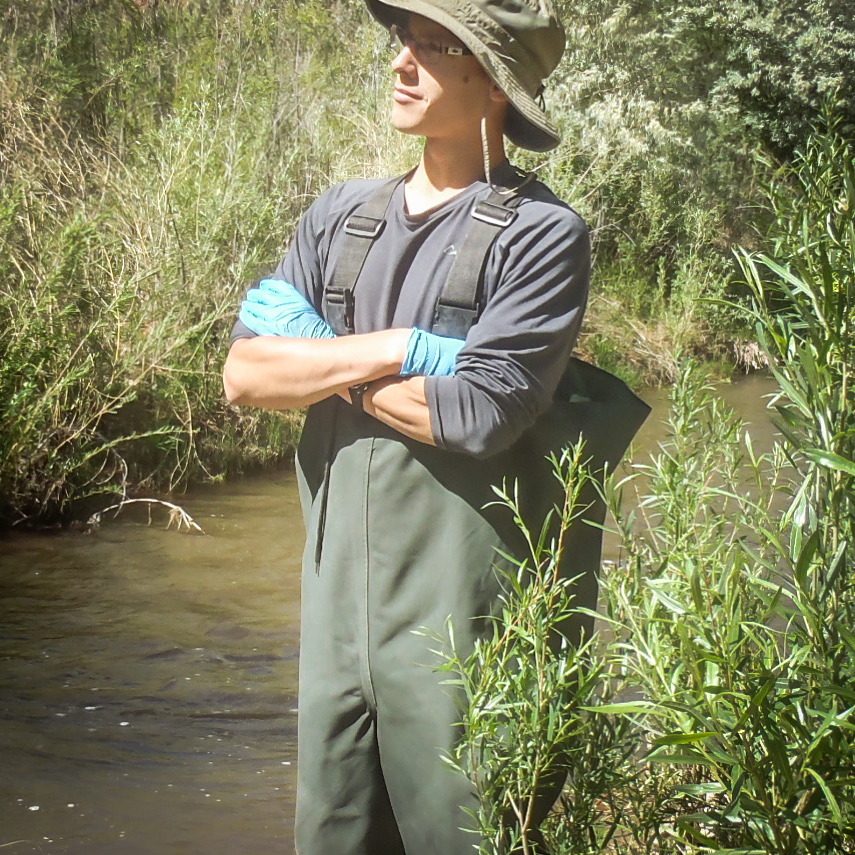
James Fluke, a master’s student in civil engineering, was the winner of the Fall 2017 LoboBITES competition. We here at Graduate Studies recently asked him some questions about his work, his background, and his aspirations.
GS: What is your dissertation/ graduate student project about?
JF: My dissertation is titled “Characterization of Pathogenic Bacterial Impairment Along the Rio Grande Near Albuquerque.” The Rio Grande near Albuquerque has been determined by the US Environmental Protection Agency to exceed safe levels of fecal indicator bacteria (FIB) for recreational contact with and direct consumption of river water. While remediation strategies have been implemented in the Albuquerque area watershed to reduce the amount of fecal contamination delivered as storm runoff, reduced FIB levels have not been observed in this snowmelt-driven reach which receives the vast majority of its water from far upstream. This work aims to gather information about the density and distribution of FIB’s in soil-water interface river sediments and river water along the reach and throughout one year.
GS: Sounds like a great project! What interested you in this topic?
JF: Working as an engineering intern at the Albuquerque Metropolitan Arroyo Flood Control Authority (AMAFCA) exposed me to the set of regulatory bodies and frameworks that govern surface water management and flood prevention in Albuquerque. Learning that the Total Maximum Daily Load for E. coli (a surrogate for fecal contamination) in the Rio Grande is frequently exceeded and represents a point of contention between entities who could be fined for this contamination sparked my interest in management of water quality and quantity. In particular, I am interested in the complications caused by the intersection of water science and law. While water quality prediction and even assessment has many inherent uncertainties, water law requires adherence to strict codes and satisfying the demands of multiple users simultaneously and itself is based on our imperfect understanding of our water systems.
GS: What do you see as the greater application of this project?
JF: I think this subject will have increasing relevance as increasing populations and decreasing surface water resources in arid areas will demand more efficient use of our resources, straining our ability to manage the conflicting demands of quantity and quality. Understanding water and contaminant transport and how to effectively assess and manage our scarce resources is one of our most vital abilities to ensure our own persistence.
GS: Why did you choose to attend UNM for graduate work?
JF: UNM is in New Mexico and New Mexico contains green chile, which I am simply not willing to give up right now. UNM gave me the support and opportunities to succeed in my undergraduate degree, during which I became involved in field and lab work in Dr. Gonzalez-Pinzon’s group. Dr. Gonzalez-Pinzon then took me into his research group and things took off from there.
GS: What are your plans after you finish your master’s degree?
JF: I plan to continue with a doctoral degree in natural resource issues specific to Native communities in the southwest U.S. as an NSF Graduate Research Fellow.
GS: What would you say has been your best experience in graduate school so far—and what’s been the most challenging?
JF: I think my best experience during my thesis project has been gathering the input and perspective of local stakeholders who have extended experience with this issue as well as the complex system of users and infrastructure. While gathering this wealth of information has been very informative and interesting, it has also revealed the detailed complexity and history of the issues we have today which can make them seem all the more difficult to address. I would have to say finding a way to feel you have a real effect of the type you want using research is both the most challenging and most rewarding part of the experience.
GS: One last question, James. If you could change the world in some way, what would you do? ?
JF: I would magically find a way to have fruit trees and crops utilize water more efficiently and endure desiccation and heat better. I would feel very tempted to tamper with human nature but the ethical implications of that seem too heavy.
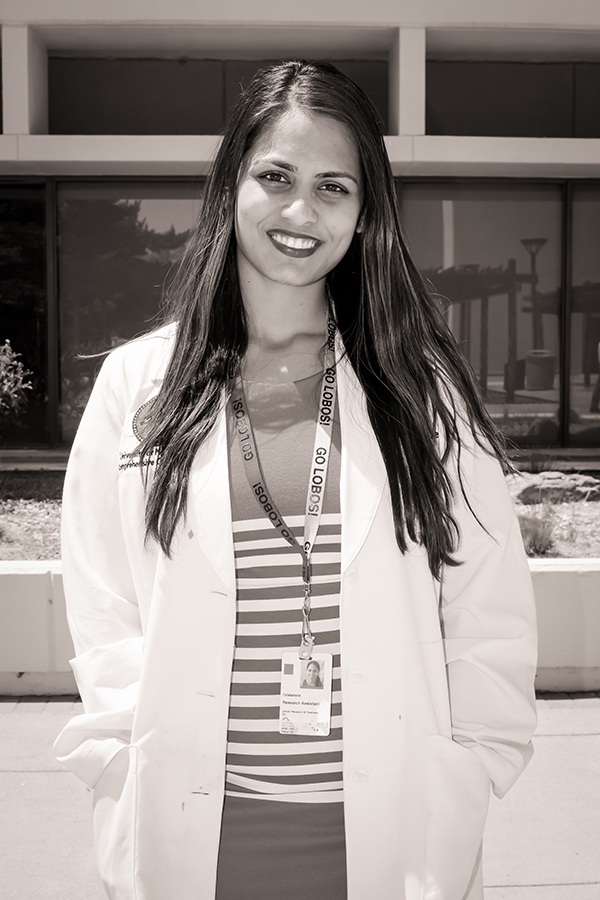
Cristabelle de Souza, a doctoral student in the UNM Biomedical Sciences Graduate Program, recently represented UNM at the Western Association of Graduate Schools (WAGS) Three Minute Thesis competition in Las Vegas, Nevada. She presented her research in a three-minute talk titled "Tackling a tumor suppressor gone rogue: can we OVARcome ovarian cancer?" Cristabelle was chosen to present at the WAGS 3MT after becoming a finalist in the Fall 2017 LoboBITES competition, part of the UNM Shared Knowledge Conference.
We recently sat down with Cristabelle to learn more about her research. With a broad smile and great energy, Cristabelle describes her graduate work examining aspects of ovarian cancer as building on other research that has focused on mutations in tumor suppressor genes. Her dissertation focuses on understanding the correlation between inherited variations at a specific codon (a sequence of three nucleotides that together form a unit of genetic code in DNA) and the acquired mutations in the tumor suppressor gene. This is a very specific and important project and one that gets at Cristabelle’s long-time interest in figuring out what causes cancer. But how did she get on this project, and more generally, here to UNM in graduate school? Cristabelle says, “I was recruited from India as a Ph.D. student to the Kansas Medical Center and began my studies in the department of Cancer Biology. After a year into my program, my thesis advisor Dr. Jeremy Chien moved to the UNM’s Comprehensive Cancer Center." Dr. Chien has been a great mentor and so she followed him to UNM. She adds, “He instills in me the desire to set high goals, I … have not looked back since.”
As for one of the highlights of coming to graduate school at UNM Cristabelle says, “Being one of the winners of the LOBO bites competition and thereafter representing UNM at the WAGS conference in Nevada were especially a great boost to my morale.” She has also received a number of grants and support for travel and has very supportive faculty and a strong bond among her fellow students. One challenge that she sees is in working closer with students and researchers across fields – like math, physics, biology, chemistry – which will benefit answering the big questions and problems of our time. When asked how she would like to change the world, Cristabelle joked, “I would grant every human being a chance to visit Albuquerque and experience great weather." But more seriously, she said, she would, “want to be part of the revolution in novel diagnostics and therapeutics that can alleviate human suffering and give people a fair chance to fight this devastating disease called cancer.”
After completing her doctoral program, Cristabelle plans to work as a principal investigator working the the field of translational cancer research. She hopes she can be "a liaison to bridge the gap between bench science and clinical outcomes," helping establish a better bedside approach for precision medicine and innovative treatment.

Yuliana Kenfield never stops moving. A doctoral candidate in UNM’s Language, Literacy, and Sociocultural Studies program, she’s a scholar, researcher, writer, teacher, poet, translator, published author, grant recipient, wife, mother to twins, and, as she says, “a high core Zuma fan and a low-key bicycler.” Now, she can add “fellowship recipient” to that already impressive list of identities—make that two-time fellowship recipient. This past school year, Yuliana received the William B. and Roberta V. Castetter Endowed Fellowship from the College of Education which recognizes her “exceptional academic progress, scholarship, creative work, research activity, and teaching, both local and national,” as well as the Latin American and Iberian Institute Ph.D fellowship, which “is awarded annually to meritorious doctoral students across campus whose research focuses on Latin America or Iberia.”
These fellowships make it possible for Yuliana to work intensively on completing her dissertation, titled “Decolonial Gestures of Andean Bilingual College Students Promoting Quechua: Community Based Participatory Research with Photovoice.” Andean students in Yuliana’s hometown of Cusco, Peru face intense discrimination against their Quechua-Spanish bilingualism as they pursue higher education. “To examine this situation and possibilities for change,” Yuliana explains, “I employed a participatory method, photovoice, within a community-based participatory research framework, to facilitate Andean bilingual college students’ exploration of Quechuan practices in their university.” This participation-based methodology, she says, “promoted critical dialogues to challenge ideologies that have obstructed the revitalization, maintenance, and development of the Quechua language in higher education.”
Yuliana was drawn to this topic through a combination of her Peruvian heritage, a concern for the lack of respect for indigenous language practices in Peru, and her own experience as a teacher of Spanish Literature and Bilingual Language Arts in New Mexico primary and secondary schools. She hopes her study will resonate with Andean faculty, students, policy makers, and community members and help increase respect for bilingual college students. “All can learn from the documented experiences of Quechua-Spanish bilingual college students to enhance ethnolinguistic awareness and respect,” she explains.
Beyond her impressive dissertation work and awards, Yuliana is also published in Spanish and English peer reviewed journals such as Apuntes Universitarios, Canadian Journal of Latin American and Caribbean Studies, Critical Multilingualism Studies, Spanish Review, Tinkuy, and two UNM journals (Best Student Essay and Intersections). At the moment, she is collaborating on an accepted article for the Educational Action Research journal.
After visiting and falling in love with Albuquerque, Yuliana and her husband moved here ten years ago. She had always wanted to pursue doctoral study, and was impressed by the LLSS program at UNM and the opportunities it provided to study literacy, bilingualism, Latin American languages, and indigenous struggles. Although she says it can be challenging to balance the many roles and duties in her life with her academic work, she’s clearly up for the challenge. She appreciates “the amount of support for graduate students, both financial and human,” at UNM, and has been particularly benefited by the Graduate Resource Center’s personnel and workshops.
After graduating with her doctoral degree this July, Yuliana will begin a position as Assistant Professor of Bilingual Education at the University of Texas of the Permian Basin In Odessa, Texas. Through her work, she says she hopes “to inspire language students and teachers with the beauty, intricacy, and necessity of indigenous languages” and “create exchange educational opportunities for linguistically and culturally diverse Peruvian and American college students.” As a professor, she will train Spanish and bilingual educators with “research-based methods, cultural humility motivation, and social justice orientation,” and by so doing contribute to the success of immigrant communities.

Hailing from Western Ireland, PhD student Terence Moriarty is a doctoral student in the Health, Education, and Sport Sciences program. Terrance is fascinated by the importance of the heart muscle to exercise physiology. He first became interested in cardiac health from his own family history, as heart problems have been a persistent problem in his family throughout the years. He hopes to change lives by improving, as he states, "the well-being and mental state of cardiac rehab patients" through exercise.
Terence began his graduate education at Central Michigan University, where he fell in love with "all things exercise." After earning his master's degree, he followed his CMU professor Dr. Micah Zuhl, who was a big part of Terence's success, to UNM. Here at UNM he has also benefited from the guidance and mentorship of his advisor, Dr. Christine Mermier. He says his time at UNM and in Albuquerque have been positive since the beginning. "The people and experiences I have had here rival no other," he insists. "I will be forever grateful for the respect and compassion I was shown from day one of arriving here."
Responding to the rise of heart-related diseases, Terence’s dissertation explores the effect of exercise on cognitive function, brain oxygenation levels, and physiological variables. "Seventy-four percent of adults in the United States do not meet the recommended guideline of at least thirty minutes of moderate-intensity physical activity on most days of the week," Terence explains. "We believe physical activity in [a] rehab setting can have a beneficial impact upon brain function and cognition."
In addition to his research, Terence greatly enjoys teaching, and currently works as a teaching assistant at UNM and as part-time faculty at Central New Mexico Community College. He hopes to continue teaching and researching at a U.S. college or university after graduating. A defining element of his teaching—and life—philosophy is the importance of kindness and hard work. "We should treat everyone equally," he explains. "We are all people who are unique in our respect, living our own lives." He goes on to say that while we may think the hills are greener elsewhere, believing in yourself and where you are now is the key to embracing life. "Some day you will look back and think I wish I had done this or that, but have no regrets. Live every moment with a smile. There is no limit to your potential if you follow these important factors."
It seems as if Terence has no limits and is always adapting to whatever opportunities and challenges come his way – similar to how the body can adapt in exercise physiology. In his discussion with us, he quotes Bruce Lee as saying, "You must be shapeless, formless, like water. When you pour water in a cup, it becomes the cup. When you pour water in a bottle, it becomes the bottle." Terence believes we should grow and adapt from these challenges as well as never back down when the going gets tough. Realizing there are always people out there with greater challenges than our own may also help us survive difficult times with compassion and respect. Terence takes his own advice to heart.
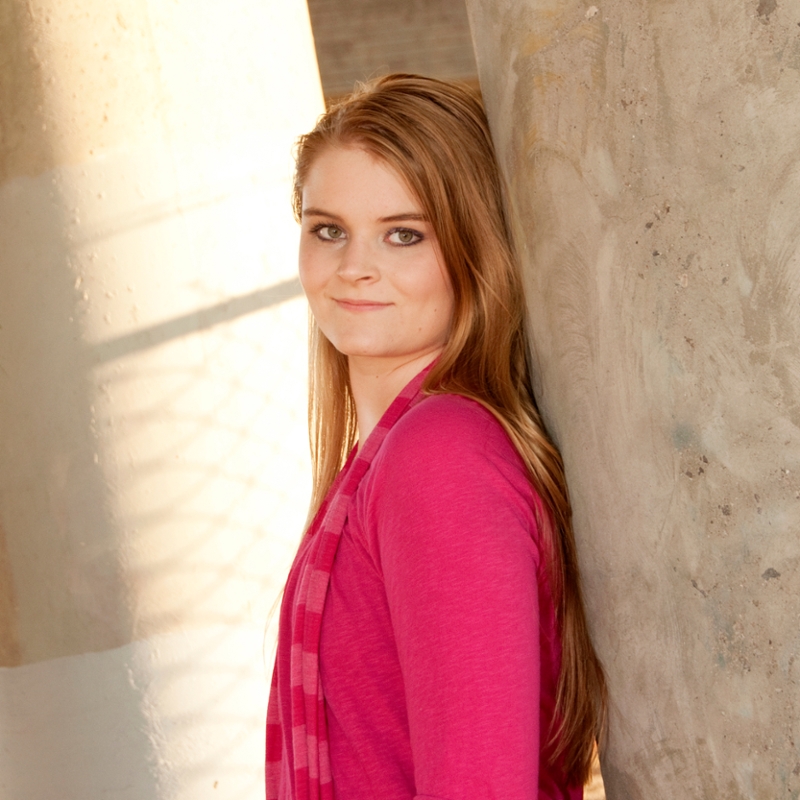
Lorraine Mottishaw, a doctoral student in biomedical engineering, has always wanted to pursue bioengineering research to impact the largest group of people possible. In her research, she focuses that energy into revolutionizing our healthcare system. Within our country, she finds, tradition often overtakes affordability, comfort, or accuracy in hospitals-often to the detriment of patients and staff. By engineering new devices or methods with current technology to improve upon our medical practices, she hopes to make procedures less expensive, uncomfortable, and/or inaccurate at an inexpensive cost. Although traditional research and new inventions have their advantages, applying engineering to current medical practices potentially saves lives, reduces cost, and creates comfort—and Lorraine has found a no better place than UNM with its integration into hospitals and diverse socioeconomic background.
Lorraine chose to study at UNM because of its flexible PhD program in biomedical engineering. Beyond a few core classes that are required, she can tailor her program to her goals after graduation. She currently focuses on business and bioengineering classes in order to make her research dreams a reality from bench to bed. She also appreciates the integration between the hospitals and the university. This allows easy access to patients for human trials and established doctor/scientist interactions for better cross-communication. On top of this, she finds that UNM has also provided her with stellar professors. Her current research professor and a potential future research professor have been very welcoming, open-minded, and caring. "Even though I am new," she says, "they extend any help they can and work with my schedule. They invite me to their talks and involve me with their research group. As a new student working her way through funding and paper writing, these professors are providing me a solid foundation to grow off of. My only challenges have been finding funding to achieve my goals."
After finishing her PhD, Lorraine plans to find a full-time job as she creates her own engineering firm. If possible, she would also like to become an editor in a scientific journal or a writer in a scientific magazine. Once retired, should would like to teach at universities to give back what has been given to her and hopefully inspire future revolutionaries like herself.
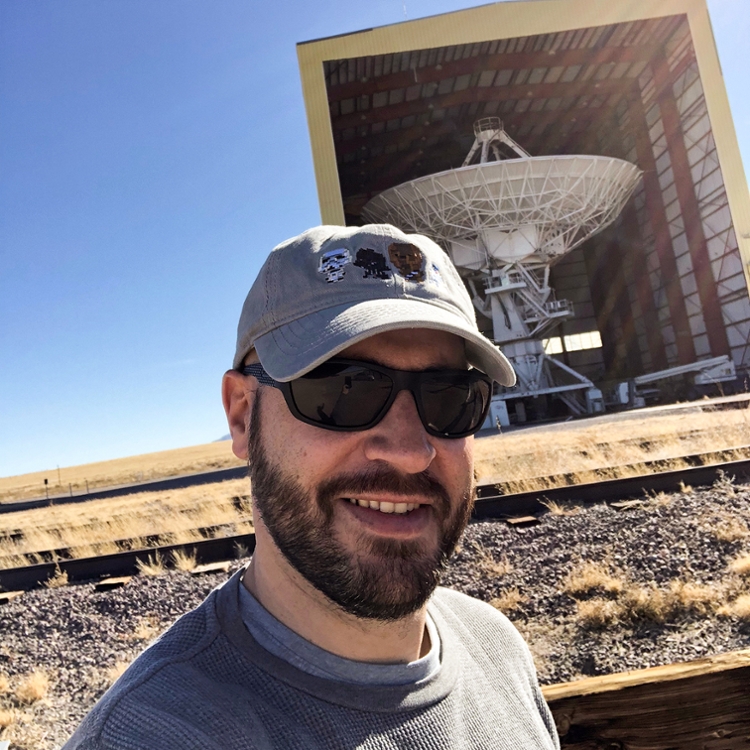
Ramón Asiain Martín already has his master's degree in Physics and is now working on his PhD in UNM's interdisciplinary Nanoscience and Microengineering Systems (NSMS) graduate program. After completing his degree in Physics at the Universidad de Valladolid in his home country of Spain, he worked on engineering projects for urban and environmental services. Seeking a career change, he later became a high school teacher in bilingual projects teaching subjects like physics, chemistry and mathematics in English for Spanish speakers. In 2015, he enrolled in an exchange program that that brought him to Santa Fe, NM to work as a Science/Math/Spanish teacher, and after three years teaching in Santa Fe he moved to Albuquerque to continue working as a science teacher while starting work on his PhD at UNM.
As he considered his options for graduate school, Ramón sought a university with a strong science program and lots of possibilities for advanced study, and UNM fit the bill. He chose the NSMS program because of its multidisciplinary nature, requiring graduate students from different areas such as physics, chemistry, biology, and engineering to work together. He feels this type of setting replicates real life work, where people from different backgrounds bring different strengths and weaknesses to achieve a common goal. Though nanoscience is a relatively new area, Ramón believes it has great potential for the future as there is much work yet to be done, and he’d like to be a part of it.
He has found his best experience at UNM to be the opportunity to get in touch again with academia: going to classes, meeting new people, working with both graduate students and faculty. An added benefit has been improving his skills in English as a second language. While he doesn't relish the paperwork and bureaucracy that goes along with being a non-resident student, he looks forward to developing his skills and knowledge at UNM before jumping back into industry.
